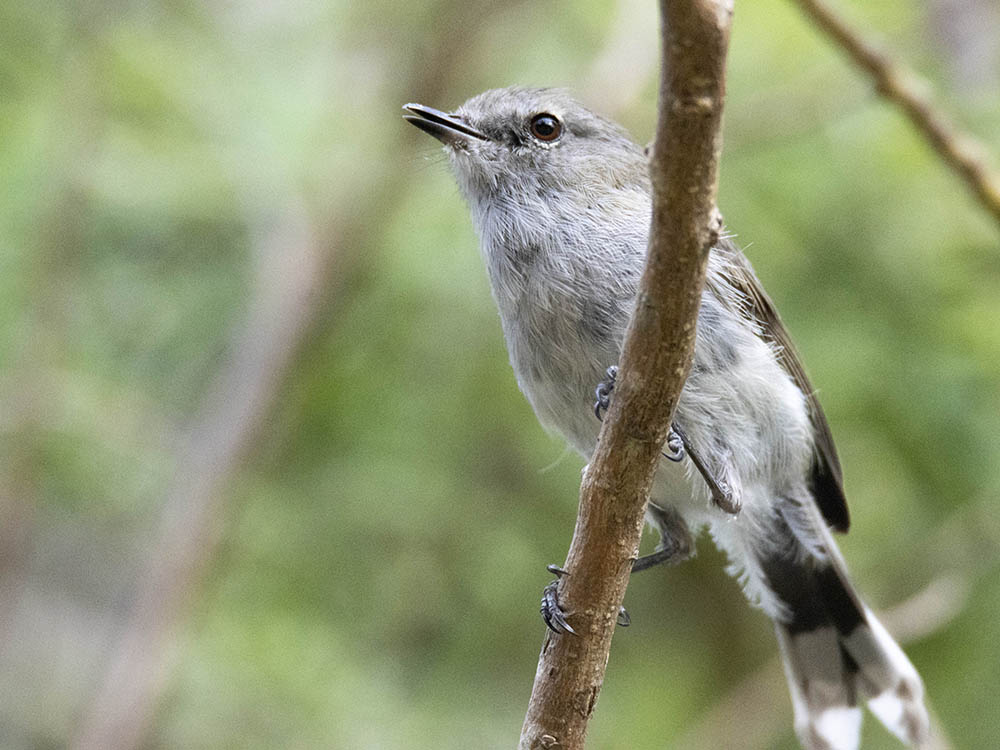Bioacoustics
Our bioacoustic work began with the great spotted kiwi/ roroa, but has expanded to other species. Individual bird calls carry information that can be utilized as an alternative to physical tagging of individuals. At Verum Group, we hope to make a difference to the way birds are monitored - introducing to New Zealand and other countries our non-invasive and accurate techniques.
When a riroriro/grey warbler is singing they might be discussing their territorial boundaries or arranging a meet and greet - now a deep learning method developed by Verum Group researchers is able to distinguish the call of individual birds. Photo: Louise Thomas.

When you hear a dawn chorus of korimako, the mid-morning song of riroriro, or kiwi calling in the darkness, you’re listening to a conversation. Many of the singers you hear know each other as individuals, and they benefit from the ability to recognise one another based on song alone. Conservation can benefit from this, too. Acoustically identifying individual birds allows us to study their ecology and behaviour with less need for invasive methods and disturbance, particularly in species or populations where capturing and handling is difficult or unacceptable.
The Verum Group team is focussing on developing artificial intelligence techniques to answer ecological and behavioural questions in birds. They have already developed successful techniques for identifying individuals of roroa (great spotted kiwi) using solely sound. They now plan to extend their computational methods to study species with more call complexity, including rowi (Okarito kiwi), tokoeka (southern brown kiwi), fantails/pīwakawaka, grey warblers/riroriro, and bellbirds/korimako. Verum Group's analytic approaches are cutting-edge in both computational and ecological terms.
"Since March 2020, we have been working on the acoustic identification of individual roroa (great spotted kiwi). Previous research showed that acoustic identification was highly accurate for a small group of birds, even when the analysis was based on a relatively limited number of manually measured song characteristics," says Verum Group Ecologist Dr Laura Molles.
"Based on the results of this study, we developed machine learning techniques to improve and automate the individual identification process. Our results with roroa are very encouraging, and we are currently preparing this work for publication. We have also begun analysing songs of two other kiwi species – rowi and tokoeka – collected and shared with us by the Department of Conservation."
Verum Group's current data collection for roroa is focussed on a population in the Paparoa Range that is managed by the Paparoa Wildlife Trust. The researchers are working closely with the Trust to deploy recorders on the territories and near nest burrows of birds that they have fitted with radio transmitters for their management and monitoring programme. Atarau Sanctuary, owned by Verum Group, provides a predator-fenced creche site for roroa chicks, so the team also deploys recorders to listen out for any vocalisations these young birds make. This provides an opportunity to track how their calls develop before they are released to the wild, and for another 12-18 months following release.
"As of April 2021, we have collected and analysed more than 40,000 hours of night-time recordings from our Paparoa field sites alone, and have analysed tens of thousands of additional hours of recordings from other sources. Our ongoing recording programme will allow us to refine both field data collection and analytical methods."
Further information
See our latest news items on bioacoustics:
February 2023: Dr Laura Molles – listening to birds
September 2022: Verum Group work presented to Cornell University
March 2022: Using song to count and identify individual birds in the wild
Laura was interviewed by CNN on bird dialects, Birds aren't all singing the same song. They have dialects, too.
For more information about bioacoustics please contact Dr Laura Molles.
See our published ecology research papers to learn more about bioacoustics.
Find out more information about our kiwi santuary at Atarau: Atarau Sanctuary website